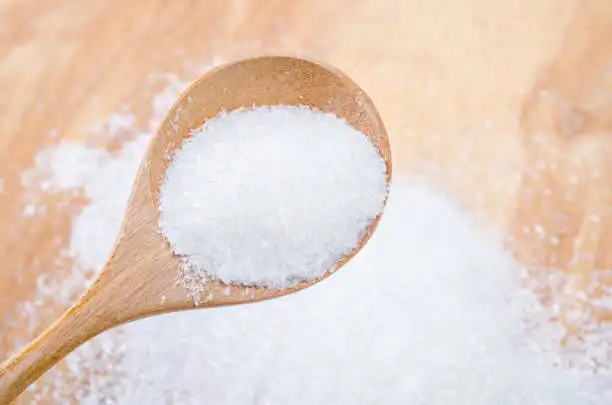The Science Behind L-Glutamic Acid
L-glutamic corrosive is an unnecessary amino corrosive, meaning our bodies can create it normally. It's a vital participant in protein combination and fills in as a synapse in the focal sensory system. This diverse compound is associated with various biochemical cycles, making it an interesting subject for specialists and well-being aficionados the same.

L-Glutamic Acid helps nerve cells communicate with one another by acting as an excitatory neurotransmitter in the brain. This capability is crucial for mental cycles like learning and memory. Moreover, it adds to the development of glutathione, a strong cancer-prevention agent that shields cells from oxidative pressure.
The flexibility of the L-Glutamic Corrosive reaches out past its part in the sensory system. It's likewise engaged with amino corrosive digestion. It fills in as an antecedent for other significant mixtures in the body, including GABA (gamma-aminobutyric corrosive), another synapse that controls state of mind and stress reactions.
Potential Benefits of L-Glutamic Acid
The expected advantages of L-Glutamic Corrosive are various and different, making it a fascinating subject of continuous exploration. A few promising areas of interest have arisen, featuring its multi-layered job in human wellbeing.
One of the most convincing advantages is its effect on mental capability. As a key synapse, L-Glutamic Corrosive is necessary to synaptic pliancy, a basic cycle fundamental for learning and memory development. There is hope for maintaining mental acuity as people get older, as new research suggests that adequate levels of this amino acid may improve cognitive performance and possibly slow down age-related cognitive decline.
Digestive health is yet another important aspect. L-Glutamic Corrosive adds to the upkeep of the gastrointestinal covering, supporting the stomach obstruction's respectability. This capability is essential for appropriate supplement retention and may assist with forestalling different gastrointestinal issues, at last advancing by and large stomach-related wellbeing.

As far as muscle capability, amino acid glutamic acid is a crucial part of proteins, which are fundamental for muscle tissue. It might help older people, who frequently experience muscle degeneration, recover from exercise and preserve muscle mass. This advantage is significant for keeping up with actual strength and versatility.
Additionally, the immune system is supported by L-glutamic acid. It is a precursor to glutamine, an essential amino acid for the immune system. Maintaining adequate levels of L-glutamic acid may improve overall health by enhancing the immune system's capacity to respond to various threats.
In conclusion, while the additional examination is justified, there is arising proof that L-Glutamic Corrosive might impact temperament guidelines. Its contribution to the creation of GABA, a synapse known for its quieting impacts on the sensory system, proposes that it could assume a part in keeping up with close-to-home equilibrium and lessening tension. L-glutamic acid has a wide range of potential benefits, so further research is necessary to fully comprehend how it affects health and well-being.
Considerations and Potential Side Effects
While amino acid glutamic acid offers numerous potential benefits, it's essential to consider its effects holistically. As with any dietary component, moderation is key, and individual responses may vary.
Natural Sources: L-glutamic acid is found naturally in many protein-rich foods, including meat, fish, eggs, and dairy products. Plant-based sources include tomatoes, mushrooms, and certain seaweeds. For most people, a balanced diet provides adequate amounts of this amino acid.
Supplementation: L-glutamic acid supplements are available, but it's crucial to consult with a healthcare professional before adding them to your regimen. They may interact with certain medications or health conditions.
Potential Side Effects: While generally considered safe when consumed in food, high doses of L-glutamic acid supplements may cause headaches, nausea, or fatigue in some individuals. People with a history of seizures or kidney problems should exercise caution.
MSG Controversy: Monosodium glutamate (MSG), a sodium salt of glutamic acid, has been a subject of debate. While some people report sensitivity to MSG, scientific evidence regarding its effects is mixed. It's important to note that naturally occurring glutamic acid in foods is different from added MSG.
Balance is Key: Like all amino acids, L-glutamic acid works in concert with other nutrients. A balanced diet that includes a variety of protein sources is typically the best approach for most people.
Conclusion
L glutamic acid powder is an entrancing compound with different jobs in our body. While it offers possible advantages for mental capability, stomach-related wellbeing, and by and large prosperity, moving toward it as a component of a fair eating regimen and lifestyle is fundamental. As exploration in this space keeps on developing, we might reveal significantly more about the effect of L-Glutamic Corrosive on human well-being.

For those keen on becoming familiar with L-Glutamic Corrosive and its applications in biotechnology, HSF Biotech offers top-notch L-Glutamic Corrosive items for different enterprises. L-glutamic acid is a white, crystalline powder with a molecular weight of 147.13 g/mol and the formula C5H9NO4. It's profoundly solvent in water and has a softening mark of 205°C (401°F). Our L-Glutamic Corrosive satisfies severe quality guidelines and is reasonable for use in food, drug, and examination applications. For more data or to talk about your particular requirements, kindly reach us at aaron@healthfulbio.com.

